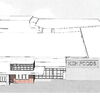Processing Your Payment
Please do not leave this page until complete. This can take a few moments.
-
News
-
Editions
-
- Lists
-
Viewpoints
-
HBJ Events
-
Event Info
- 2024 Economic Outlook Webinar Presented by: NBT Bank
- Best Places to Work in Connecticut 2024
- Top 25 Women In Business Awards 2024
- Connecticut's Family Business Awards 2024
- What's Your Story? A Small Business Giveaway 2024 Presented By: Torrington Savings Bank
- 40 Under Forty Awards 2024
- C-Suite and Lifetime Achievement Awards 2024
- Connecticut's Health Care Heroes Awards 2024
-
-
Business Calendar
-
Custom Content
- News
-
Editions
View Digital Editions
Biweekly Issues
- April 29, 2024
- April 15, 2024
- April 1, 2024
- March 18, 2024
- March 4, 2024
- February 19, 2024
- February 5, 2024
- January 22, 2024
- January 8, 2024
- + More
Special Editions
- Lists
- Viewpoints
-
HBJ Events
Event Info
- View all Events
- 2024 Economic Outlook Webinar Presented by: NBT Bank
- Best Places to Work in Connecticut 2024
- Top 25 Women In Business Awards 2024
- Connecticut's Family Business Awards 2024
- What's Your Story? A Small Business Giveaway 2024 Presented By: Torrington Savings Bank
- 40 Under Forty Awards 2024
- C-Suite and Lifetime Achievement Awards 2024
- Connecticut's Health Care Heroes Awards 2024
Award Honorees
- Business Calendar
- Custom Content
The science world watches as Craig Crews and Arvinas spearhead development of cancer drugs
 For me, it’s about impact, Crews says. “For me to be able to escort some of these [discoveries] out of my lab into the clinic would be really wonderful.”
For me, it’s about impact, Crews says. “For me to be able to escort some of these [discoveries] out of my lab into the clinic would be really wonderful.”
Of all the stars in New Haven’s bioscience firmament, Arvinas may shine the brightest.
A hint at just how bright came last October when the company went public (Nasdaq: ARVN). Its initial public offering raised $123.2 million.
On July 19 the company announced the completion of a follow-on Series D investment round that raised $32.5 million in equity funding. Arvinas last year signed an $830 million-plus drug development deal with Pfizer.
In drug development, no words are freighted with more power and potential than “cancer cure.” For most of history, cancers were thought to be mainly invulnerable to drug therapies.
That was before proteolysis-targeting chimeras [PROTAC], a new type of protein degradation that Arvinas’ founder Craig Crews began working on two decades ago. Protein degradation capitalizes on the cell’s natural mechanism for clearing unwanted or damaged proteins.
“Cells have a quality-control system,” Crews explains. “There might be 20,000 different types of proteins inside each cell. Those proteins perform different functions, and they have to be eliminated if they become damaged, aged. There’s a machinery that recognizes when a protein is damaged and will target it for elimination. [The body is] constantly making new proteins and degrading old ones.”
With the new PROTAC system devised by Crews and his research team, “We can now cause the problem protein to be eliminated,” he says. “The protein is causing a disease; you add a drug and it stops that.”
This new drug strategy has entered clinical trials that could be a first step toward the commercialization of a revolutionary new drug therapy derived from PROTAC to treat prostate cancer.
It also holds in the balance the fortunes of the company Crews created to pursue his potentially game-changing therapies and, perhaps, emerge from the long, dim tunnel of time and trial into the bright sunshine of commercial acceptance and marketplace success.
That was a game-changer. Today, Arvinas’ two leading drug candidates — known for now as ARV-110 and ARV-471 — have the potential to revolutionize treatment for prostate and breast cancers, respectively intractable and deadly cancers long deemed “undruggable.”
As the journal Nature observed this spring, “All eyes are on Arvinas.”
Crews has been down this road before. In 2003 he co-founded the biotechnology company Proteolix to develop a drug, YU101, that became Kyprolis (generic: carfilzomib). In 2012 this compound was approved by the FDA to treat patients with multiple myeloma.
On the basis of successful Phase 2 trials of carfilzomib, Onyx Pharmaceuticals acquired Proteolix in 2009, and was itself acquired in 2013 by Amgen for $10.4 billion.
That success got Crew recognized as Entrepreneur of the Year for 2013 by Connecticut United for Research Excellence (CURE), the state’s bioscience cluster (since rebranded as BioCT).
That track record of success was invaluable to Crews this time around in building Arvinas — in terms both of raising capital, and attracting the best talent available to make it happen.
“When I had this new idea and started talking to investors, I had a track record and could say, ‘I know how to translate stuff from my lab into a successful startup,’” he explains.
That track record also helped him to assemble a team to build Arvinas from the ground up. A key early member of that team was Timothy Shannon, MD, a local guy (Hopkins, Amherst) who had worked as chief medical officer of Bayer and later as CEO of Jonathan Rothberg’s CuraGen Corp.
Shannon had helped to take CuraGen public before going over to the investment side with Westport-based Canaan Ventures. Shannon jumped into Arvinas with both feet and led the company’s additional Series A financing round that raised $15 million and attracted additional financing from Connecticut Innovations, the state’s quasi-public technology investment arm. He also served as Arvinas CEO for 18 months to get the venture off the ground.
“Craig was looking for someone to help him start the company,” Shannon recounts. “We had lunch, and within 15 seconds I was really interested. I agreed to come on as CEO and bring Canaan in as lead investor.”
“One of Craig’s strengths is that he’s a world-class scientist, but he’s also very good at connecting dots that might not be obvious to others — but are obvious to him. So I got very quickly sold on trying to see if I could help him do that.”
Shannon describes the “symbiotic relationship” needed to enable an investor/executive to build a company based on a profound discovery by a scientist who cannot function as an executive (because, in Crews’ case, he’s employed by Yale).
“Craig is brilliant at conceiving of how to do something new and innovative that could be really important,” Shannon says. “And the concept here was mind-boggling. What he needed help in doing was building the business around that to support the [science] to ultimately produce the drugs that are now being tested.”
And to build that business, Crews adhered to one fundamental principle: “You hire great people,” he says. “We had Tim. We hired a head of chemistry named Andrew Crew [from Astellas Pharma, who joined Arvinas at the beginning of 2018 as senior vice president and chief technology officer], who brought with him a great team that helped us hit the ground running.”
That team today is headed by president and CEO John G. Houston, who spent nearly two decades at Bristol-Myers Squibb (BMS) as senior vice president of specialty discovery and was a member of BMS’ R&D executive leadership team.
“So, if you want great results,” Crews says, “you hire great people.”
Arvinas’ leading drug candidate, ARV-110, a targeted therapy for prostate cancer, entered Phase 1 trials this summer.
The trials take place in four sites, one of which is Yale, Crews says. It includes approximately three dozen males with metastatic prostate cancer and lasts into the spring of 2020. ARV-110’s PROTAC degrades the androgen receptor, a protein already targeted by a handful of FDA-approved drugs.
Crews and his team calculate that, by degrading rather than inhibiting this receptor, its PROTAC will be able to treat patients who derive no benefit from or have become resistant to existing drug therapies.
Arvinas’ second drug, ARV-471, has now has the green light from the FDA for clinical trials to begin, so the company has begun actively recruiting subjects for research trials, Crews says.
And there’s more: Arvinas last month announced that its researchers had succeeded in inducing the elimination of a critical protein believed to be involved in Alzheimer’s — a protein known as tau.
“I lost my father to Alzheimer’s; it’s a terrible disease that doesn’t have good clinical options,” Crews says. “So if I could help to offer clinicians therapeutic drugs [for Alzheimer’s], I feel I’d be making an important impact.”
Down the road, Crews says Arvinas is “interested in applying my technology to neurodegenerative diseases like dementia, Alzheimer’s, Parkinson’s. Many of these diseases are the result of a critical protein clumping together,” he explains. “If we can eliminate these protein aggregates that are causing disease, that hopefully will have a positive impact on that disease.
Crews is asked what it would mean to him if these drugs reached the commercialization stage, proved successful and in the end save people’s lives.
“It would mean a lot,” he says. “For me, it’s about impact. For me to be able to escort some of these [discoveries] out of my lab into the clinic would be really wonderful.”
But he is realistic. Crews understands that the probability of any of Arvinas’ compounds reaching commercialization is “statistically low. Only a small minority of drug candidates are actually approved,” he acknowledges.
Which is a major factor in why drug-development is so breathtakingly costly in the U.S. — and why the stakes are so high for Crews and his team.
“It’s a difficult process that is expensive, and all those failures and [financial] losses have to be incorporated, if you will, when you have a successful drug,” Crews explains. “That’s in part why drugs are so expensive — because of the low success rate. When one is successful, there are a lot of failures behind that [one success].”
Beyond that, “Our understanding of biology is imprecise,” Crews notes. “Our understanding of how the human body deals with drugs is imprecise. And we want to make sure as a society, as the FDA, that they’re safe.
“So we need to prove that.”
Craig Crews and five other area innovators and entrepreneurs will be honored at an event on Oct. 30, "60 Ideas in 60 Minutes."

2022 Giving Guide
This special edition informs and connects businesses with nonprofit organizations that are aligned with what they care about. Each nonprofit profile provides a crisp snapshot of the organization’s mission, goals, area of service, giving and volunteer opportunities and board leadership.
Learn more
Subscribe
Hartford Business Journal provides the top coverage of news, trends, data, politics and personalities of the area’s business community. Get the news and information you need from the award-winning writers at HBJ. Don’t miss out - subscribe today.
Subscribe
2024 Book of Lists
Delivering Vital Marketplace Content and Context to Senior Decision Makers Throughout Greater Hartford and the State ... All Year Long!
Read Here-
2022 Giving Guide
This special edition informs and connects businesses with nonprofit organizations that are aligned with what they care about. Each nonprofit profile provides a crisp snapshot of the organization’s mission, goals, area of service, giving and volunteer opportunities and board leadership.
-
Subscribe
Hartford Business Journal provides the top coverage of news, trends, data, politics and personalities of the area’s business community. Get the news and information you need from the award-winning writers at HBJ. Don’t miss out - subscribe today.
-
2024 Book of Lists
Delivering Vital Marketplace Content and Context to Senior Decision Makers Throughout Greater Hartford and the State ... All Year Long!
ABOUT
ADVERTISE
NEW ENGLAND BUSINESS MEDIA SITES
No articles left
Get access now
In order to use this feature, we need some information from you. You can also login or register for a free account.
By clicking submit you are agreeing to our cookie usage and Privacy Policy
Already have an account? Login
Already have an account? Login
Want to create an account? Register
Get access now
In order to use this feature, we need some information from you. You can also login or register for a free account.
By clicking submit you are agreeing to our cookie usage and Privacy Policy
Already have an account? Login
Already have an account? Login
Want to create an account? Register






0 Comments